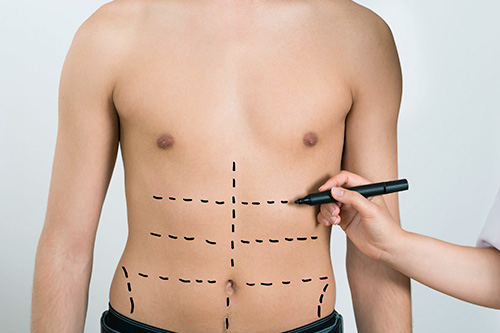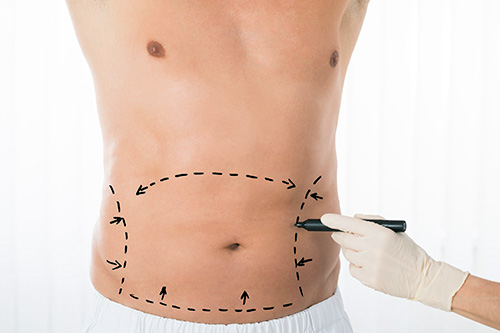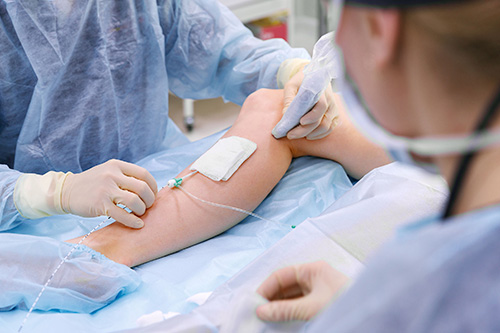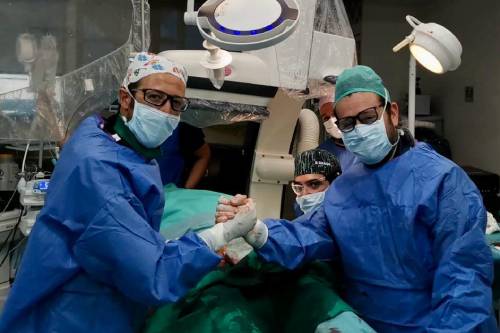
Penile implants are used to treat erection problems (erectile dysfunction). Implants can be semi-rigid or cylindrical, replacing the spongy tissue inside the penis. Implants come in a variety of diameters and lengths.
Semi-rigid implants are always firm. They can be folded into different positions (upward for sexual intercourse or downward for hiding under underwear).
There are two types of hydraulic prostheses, both of which have cylinders on the shaft of the penis, a reservoir containing salt water and a pump to move salt water from the reservoir to the cylinders. You create an erection by pumping salt water from the tank to the cylinders. The discharge valve on the pump drains the salt water from the cylinders and returns to the tank.
- Three-component hydraulic system. It consists of two cylinders, a pump and a tank. The latter is placed between the abdominal muscles. With this system, one of the most natural and precise results is achieved, as the erection is the firmest and most complete.
- Hydraulic of two components: It consists of two tubes and a pump that are connected to each other. The latter is implanted between the testicles, and the cylinders are introduced into the corpora cavernosa. The device has a sterile saline solution inside, and only a certain skill is necessary to achieve its activation.
The surgery will be performed under regional or general anesthesia. Implants are inserted through an incision made in the penis, lower abdomen, or scrotum. A thin flexible tube (catheter) is inserted briefly through the urethra and into the bladder to drain urine.
A three-component implant is generally more reliable than a two-component implant. Inserting the three-component implant is a slightly more complicated surgery.
Penile implant recovery.
Usually, you need 1 or 2 days of recovery in the hospital. You will take antibiotics until 2 weeks after surgery to prevent infection. The urinary catheter is used about 1 day after surgery.
Do not wear underwear or tight-fitting clothing until the surgical incision has healed. Men with implants need to avoid wearing tight clothing for 6 weeks so as not to push the pump out of position.
In general, you can return to normal and sex life after about a month. Implants usually don't swell for a month.
Why do you have a penile implant?
Penile implants are an option when other treatments for erection problems have not been successful and additional treatment is desired.
Implants may be the treatment of choice for young and middle-aged men with erection difficulties due to physical causes. Penile implants may be the appropriate treatment for men with erection problems caused by:
- Diabetes.
- Pelvic surgery.
- Disease of the blood vessels.
- Injury to the pelvis, genitals, or spinal cord.
- Peyronie's disease, a curvature of the penis caused by scar tissue.
Because implants permanently change the tissue of the penis, they cannot be used for men whose erection problems are psychological.
What are the results?
The satisfaction rate for most men is high. An erection with a properly functioning implant may seem more natural than one of other non-surgical methods. The glans of the penis is not made completely rigid by devices. Semi-rigid implants do not increase the size of the penis or produce the fullness of a natural erection.
Implants do not interfere with ejaculation, although ejaculation and orgasm are not guaranteed. Implants do not increase or decrease sexual desire.
Non-inflatable implants and inflatable devices can last indefinitely.
What do I need to take into consideration when making a decision?
- When considering surgery for erection difficulties, it is important to include your partner in your decision.
- It is important that you have realistic expectations about the type of erections you can have with an implant.
No problems have been reported with silicone particles coming off the implants.





























